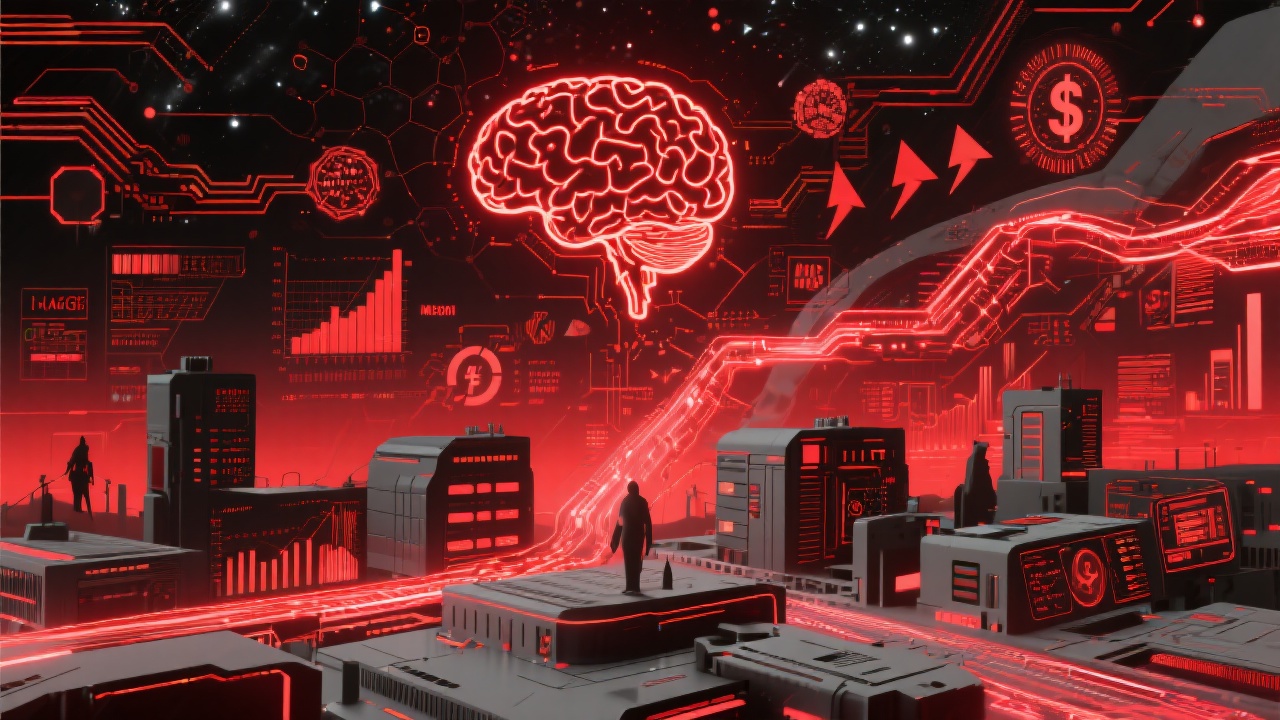The Future of AI: AGI or GenAI? | The Potential of Artificial Intelligence Technologies
In every discussion about the future of technology, artificial intelligence (AI) inevitably takes center stage. Today, AI is not only popular in the technology space but is also creating significant impact across multiple industries, sparking debates everywhere. However, AI comes in different forms, and two of the most fascinating and complex are Artificial General Intelligence (AGI) and Generative AI (GenAI).

In every discussion about the future of technology, artificial intelligence (AI) inevitably takes center stage. Today, AI is not only popular in the technology space but is also creating significant impact across multiple industries, sparking debates everywhere. However, AI comes in different forms, and two of the most fascinating and complex are Artificial General Intelligence (AGI) and Generative AI (GenAI).
What is Generative AI (GenAI)?
Generative AI, or GenAI, is a type of AI capable of producing new and original content such as text, music, images, or computer programs. Trained on massive amounts of data, it can then generate new outputs that appear real and meaningful. The strength of GenAI lies in its ability to produce unexpected, never-before-seen content—sometimes imitating, and other times surpassing, human creativity.
GenAI operates much like a talented artist, musician, or writer working independently. When given basic input, it can produce original, creative outputs. It is widely applied across domains—from art and music to text generation, customer service, image super-resolution, and more.
Applications of GenAI include:
Art & Music: Used to create artworks, music, and personalized playlists based on user preferences, or to reimagine existing works.
Content Creation: In publishing and media, GenAI can generate news articles, blog posts, and social media content by scanning large volumes of data and producing grammatically correct, coherent writing.
Customer Service: Powers chatbots and virtual assistants that understand and respond to queries, reducing the workload of human agents and enabling 24/7 support.
Image Super-Resolution: Enhances low-resolution images, restoring old photos or improving video quality.
Advanced Machine Translation: Provides more accurate, contextual translations, breaking down language barriers and facilitating global communication.
Supply Chain Optimization: Improves demand forecasting, inventory management, and delivery route planning, boosting efficiency and lowering costs.
Design & Manufacturing: Plays a role in designing lightweight yet durable components in industries such as automotive, aerospace, and manufacturing, enabling innovative and effective product development.
What is Artificial General Intelligence (AGI)?
Artificial General Intelligence (AGI), on the other hand, is a type of AI designed to perform any intellectual task a human can do. Unlike narrow AI systems focused on specific tasks, AGI can learn and adapt to any situation. It is not limited to predefined areas; instead, it can tackle a wide variety of challenges like humans do.
AGI represents the concept of an ultimate multitasker in AI—systems that are flexible, adaptive, and capable of reasoning across multiple domains. Its features include continuous learning, reasoning, understanding complex concepts, and applying knowledge across different contexts. This is akin to having an AI companion that can explore diverse domains, solve problems like a professional, and make conscious decisions.
Potential applications of AGI include:
Natural Conversation: AI systems capable of holding natural discussions across a wide variety of topics.
Autonomous Robots: Robots that can adapt to new and dynamic situations, from space exploration to therapeutic care.
Continuous Learning: Ability to learn new tasks without extensive programming.
Moral & Ethical Decision-Making: Addressing dilemmas such as those faced in healthcare with moral reasoning.
Complex Problem-Solving: Handling challenges requiring logical thinking and understanding across multiple disciplines.
The Combination of AGI and GenAI
In the future, AGI and GenAI will likely complement each other. AGI’s broad insights, paired with GenAI’s specialized creative capabilities, could revolutionize sectors such as healthcare, education, finance, and entertainment.
In healthcare, AGI might analyze a patient’s overall health, while GenAI could use that analysis to generate personalized treatment plans.
In education, AGI might monitor student performance, while GenAI creates tailored learning materials.
Investments and Future Outlook
In 2023, AI investments reached $42.5 billion across 2,500 funding rounds. Although AI funding fell by 10% compared to the previous year, this was far less severe than the 42% drop in overall venture investments. The number of AI unicorns rose with 22 new entrants in 2023, while interest in AI stocks drove the Nasdaq index up 43%.
AI continues to claim a major role in the tech world, and it is vital for entrepreneurs to closely follow developments in the field. Building robust AI strategies will be critical for leveraging this transformation in business.
Conclusion
Both AGI and GenAI will play essential roles in shaping the future of technology. Rather than seeing them as rival forces, it is more valuable to recognize their potential for collaboration. AGI can harness GenAI’s specialized strengths, while GenAI can benefit from AGI’s broader reasoning to create more sophisticated content. Sectors such as healthcare, finance, education, and entertainment all stand to benefit from this synergy.
At present, large language models (LLMs) such as ChatGPT and Bard (recently rebranded as Gemini) are reshaping how we approach responses and complex problem-solving. Meanwhile, the broader field of generative AI has delivered striking results in areas like deepfakes and digital art.
On the other hand, AGI remains more of a concept than a reality. While the idea has circulated for years, practical implementation is still pending. LLMs are impressive, but they represent only part of the puzzle—true AGI is still far from being fully realized.